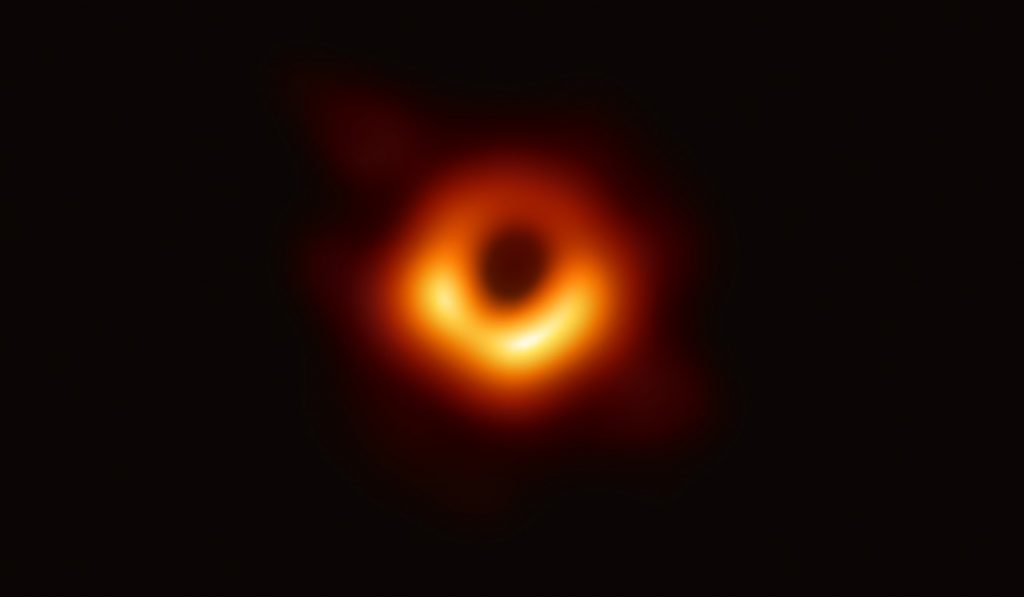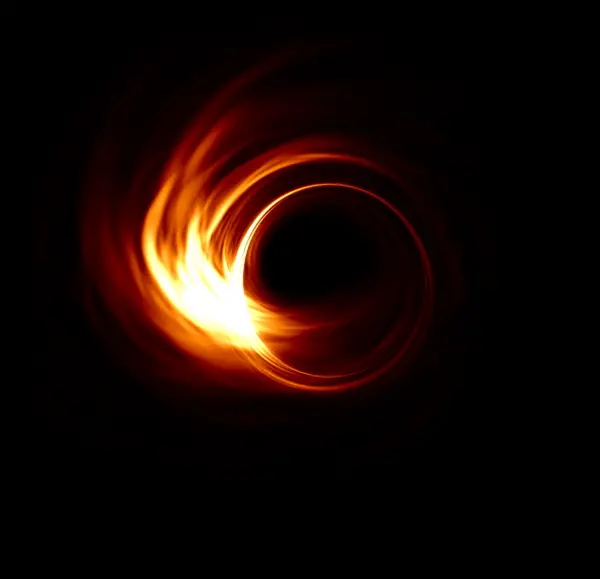The Event Horizon Telescope (EHT) is an impressive collaboration effort which created the first image of a black hole in history, solidifying Einstein’s general relativity theory.
Particular black hole that’s captured is at the center of Messier 87 galaxy, 55 million light years away and 6.5 times bigger than the mass of the sun.
Previously there has been attempts to capture black holes but observations were limited to jets of light coming from somewhere M87 black hole is suspected to be. (Hubble Faint Object Spectrograph was used to measure the rotation velocity of the ionized gas disk -astrophysical jet- at the center of M87 indicating a central black hole with 30% uncertainty.)
Now with the results EHT achieved, it’s official. 8 telescopes, 60 institutions across 20 countries contributed to this groundbreaking discovery. Telescopes used were: ALMA, APEX, Large Millimeter Telescope Alfonso Serrano, James Clerk Maxwell Telescope, IRAM 30-meter telescope, Submillimeter Array, Submillimeter Telescope, and South Pole Telescope.

8 Telescopes synced their data with atomic clocks and each of them saved approximately 350TB of data per day stored on high-performance helium-filled hard drives. Run on 5 nights during a 10 night period in April 2017, 8 telescopes would generate approximately 14 Petabyte of data (1 Petabyte = 1000 Terabyte).
Drives were then flown by commercial planes to supercomputers: Max Planck Institute for Radio Astronomy and MIT Haystack Observatory and that’s where Python comes in.
AIPS is the standard data-reduction and analysis software package most commonly used for radio interferometers, including VLBI (Very-long-baseline interferometry).
Simulation Credit: Hotaka Shiokawa
First written in FORTRAN 66 in 1978, AIPS wasn’t the most suitable to work on EHT data since EHT data had its own characteristics. (Such as wide range of signal to noise, S/N, as opposed to ideal low S/N situation for AIPS)
Because of this scientists created an automated Python script based on AIPS. In addition to this custom pipeline, several standard Python libraries like scipy, pylab, matplotlib, and numpy were utilized during the project.
Black holes are one of the major frontiers in physics and our understanding of universe. Since all the observations in the project are consistent with Einstein’s theory, it also suggests that intense gravity provided by a black hole might be bending spacetime and creating two end points in spacetime.







